The earliest vertebrates didn’t have jaws, but once true jaws evolved the animals that had them quickly became more numerous and diverse. These days, the only jawless fishes left are a few dozen species of lampreys and hagfishes, but in the Early Devonian most fishes lacked jaws. One of those Early Devonian beasts was Cephalaspis, which despite its lack of jaws is more closely related to us than to lampreys.
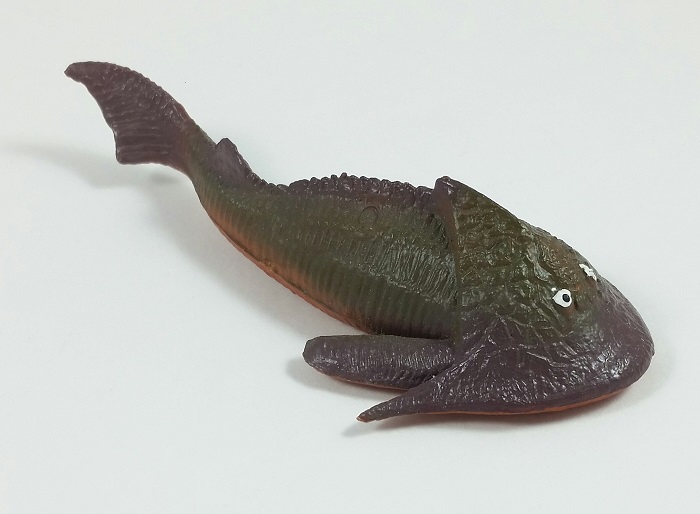
This model of Cephalaspis was produced in 1983 by Starlux, a French company best known for its toy soldiers. Sculptor Maurice Massat produced about 100 different prehistoric figures for them, however, and very few companies have come close to the taxonomic variety of Starlux’s range. It wasn’t until just a few months ago that any other company attempted another Cephalaspis figure.
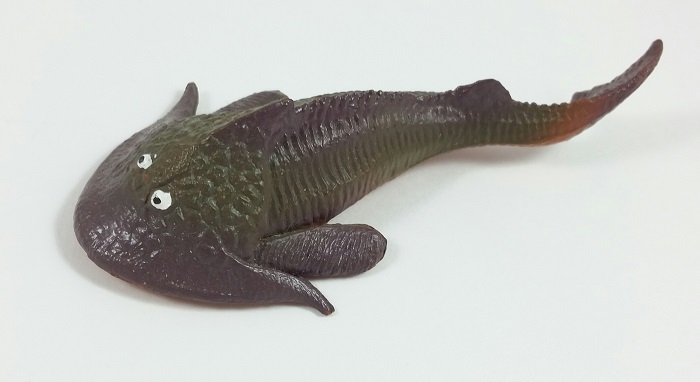
Being produced from the 1960s through the 1980s, most of Starlux’s line has become outdated, as our collective knowledge of prehistory has grown. But the Cephalaspis holds up reasonably well, especially compared to Starlux’s dinosaurs. The difference is understandable, since dinosaurs are known almost entirely from bones, and external appearance is hard to reconstruct. A fish like this, by contrast, is known from its exoskeleton, dermal bones that give an excellent idea of its external appearance.

Compared with the real thing, this toy is a little bit too thick in the torso and a little bit too short relative to the size of the head. That’s probably for the best, since Starlux figures tend to be fragile, and a narrow midsection would have been much easier to break. The “wings” of the head are curved slightly forward at the tips, which we have no reason to suspect was true in life. The eyes are a little too large and animated. The field of sensory structures between the eyes is discernible, but the lateral fields along the edge of the head shield are indistinct. Instead, almost the entire head shield is given the sort of irregular pavement texture of the sensory fields.
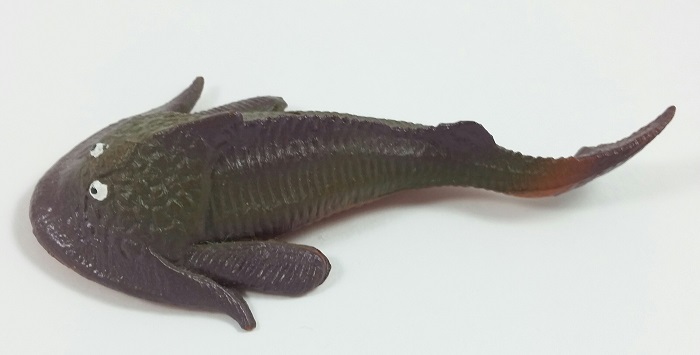
The belly lacks any real detail, being painted a uniform brick red, contrasting with the purplish-black above. In this view we can see that it correctly has pectoral fins but lacks pelvic fins.
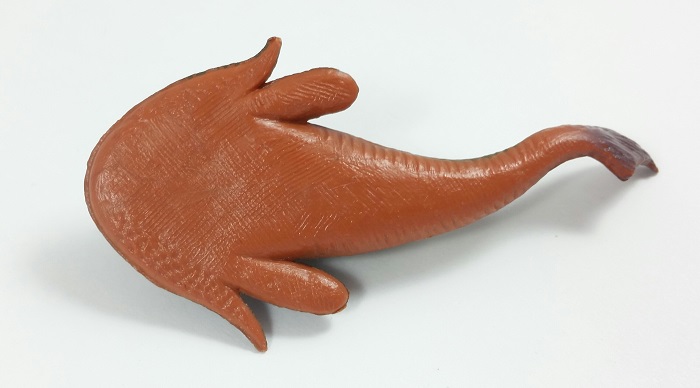
At about 11 cm long, this fish is roughly 1:3 scale. It actually looks pretty good alongside Kaiyodo’s gorgeous rendition of the slightly older (geologically) Hemicyclaspis, although if you’re looking for the most up-to-date Cephalaspis, you should definitely go for the Colorata version.
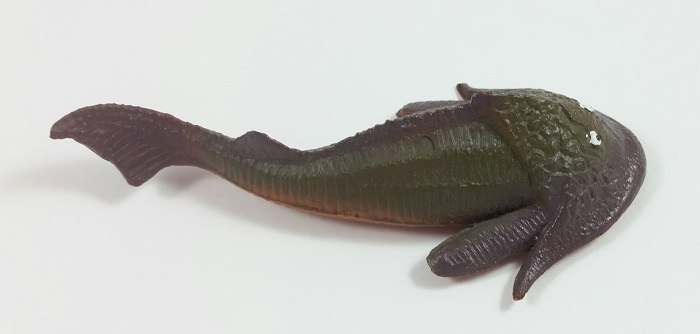
In general, the Cephalaspis is one of the best figures Starlux made. It’s held up pretty well, and it’s an attractive sculpt. Unfortunately, it’s also one of their rarest. If you can find one, your lunch money will be a little depleted. If you’re interested in Paleozoic fish or vintage figures, though, I think this one is worth seeking out.
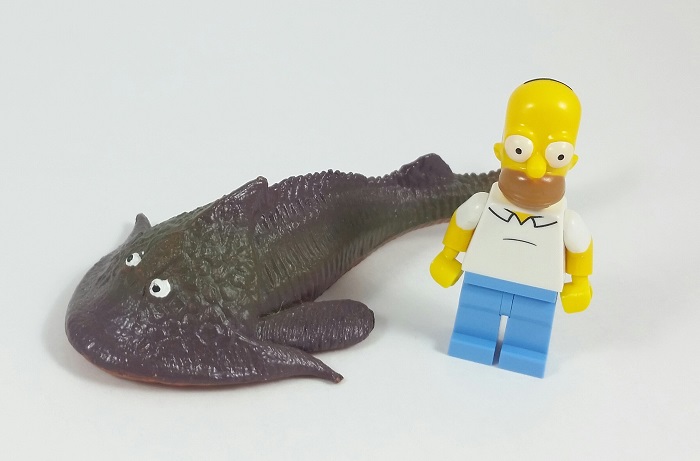
Disclaimer: links to Ebay and Amazon on the DinoToyBlog are affiliate links, so we make a small commission if you use them. Thanks for supporting us!



If you can, you can give me that Cephalaspis. I do not have any figures of a jawless fish and if you’re still looking for someone to trade that fish, I am the right person to ask.
I sent you an email about this.
Where is the email?
It was April 24. I’ve just sent a followup. Maybe check your spam folder.
Nice review!
I am having trouble trying to get onto the Dinosaur Toy Forum because the page that I come to always says “An Error Has Occurred!” How can I solve this problem?
Thank you.
Amazing for its time.
Cute little fish and definetly one of the most accurate Starlux figures. I wish more companies would bother withearly prehistoric fish (and amphibians) other than Dunkleosteus, cause the prices I’ve seen asked for this one are not what I am goin’ to invest 😀